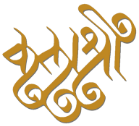Boost Your Performance: Breathing Exercises for Dancers
Dance is a captivating and demanding art form that requires not only skillful technique and flexibility but also a deep connection between body and mind. One often overlooked aspect of dance is the importance of proper breathing. Breath is the life force that sustains us, and for dancers, mastering the art of breath control can significantly enhance performance. In this blog, we will explore the world of breathing exercises tailored specifically for dancers, providing valuable insights and techniques to boost your performance and elevate your dance experience. Importance of Breath in Dance Before delving into specific breathing exercises, it’s crucial to understand why breath plays a pivotal role in dance performance. Controlled and intentional breathing can: Enhance Stamina Dance is physically demanding, requiring a significant amount of energy. Proper breathing techniques help optimize oxygen intake, improving endurance and stamina during intense dance routines. Facilitate Movement Breath is intrinsically linked to movement. Learning how to synchronize breath with various movements enhances coordination, fluidity, and overall grace in dance. Reduce Anxiety Stage fright and performance anxiety are common challenges for dancers. Controlled breathing can help calm the nervous system, reducing anxiety levels and allowing dancers to perform with confidence. Improve Focus Mind-body connection is essential in dance. Conscious breathing enhances focus and concentration, helping dancers stay present in the moment and connect more deeply with their movements. Breathing Exercises for Dancers Diaphragmatic Breathing Diaphragmatic breathing forms the foundation for many other breathing exercises. Mastering this technique helps dancers establish a strong connection between breath and movement. How to do it: – Sit or stand comfortably with a straight spine. – Place one hand on your chest and the other on your abdomen. – Inhale deeply through your nose, allowing your abdomen to expand. – Exhale slowly through pursed lips, feeling your abdomen contract. – Repeat for several breath cycles, focusing on the expansion and contraction of the abdomen. Counted Breaths This exercise enhances breath control and rhythm, two crucial elements in dance. Practice counting breaths during warm-ups to set the pace for your performance. How to do it: – Inhale deeply for a count of four. – Hold the breath for a count of seven. – Exhale slowly for a count of eight. – Pause for a count of four before beginning the next cycle. Nadi Shodhana (Alternate Nostril Breathing) Nadi Shodhana is a great pre-performance exercise, promoting mental clarity and balance. How to do it: – Sit in a comfortable position, spine straight. – Use your right thumb to close off your right nostril and inhale deeply through your left nostril. – Close your left nostril with your right ring finger, release your right nostril, and exhale. – Inhale through the right nostril. – Close the right nostril, release the left nostril, and exhale. – Continue this pattern for several breath cycles. Kapalabhati (Breath of Fire) Incorporate Breath of Fire into your dance warm-up routine to increase energy levels and prepare your body for dynamic movements. How to do it: – Sit with a straight spine and take a deep inhale. – Exhale forcefully and quickly through your nose, followed by a passive inhale. – Repeat this pumping action, focusing on the forceful exhalations. Box Breathing Box breathing is a versatile exercise that can be used both in warm-ups and cool-downs. It helps regulate the nervous system and fosters a sense of calm. How to do it: – Inhale deeply for a count of four. – Hold the breath for a count of four. – Exhale for a count of four. – Pause for a count of four before beginning the next cycle. Incorporating Breathing into Dance Practice 1. Warm-Up Routine Begin your dance practice with a brief warm-up that includes diaphragmatic breathing and counted breaths. This sets the stage for improved breath awareness and control throughout your session. 2. Choreography Rehearsals During choreography rehearsals, focus on synchronizing your breath with specific movements. This not only enhances the overall aesthetic of your performance but also ensures efficient energy management. 3. Performance Preparation Incorporate Nadi Shodhana and Breath of Fire into your pre-performance routine. These exercises will help calm nerves, increase focus, and boost energy levels for an outstanding on-stage experience. 4. Cool-Down Sessions End your dance practice with a cool-down that includes box breathing. This signals to your body that the intense physical activity is coming to an end, promoting relaxation and aiding recovery. Conclusion In the world of dance, where every movement tells a story, the breath becomes the silent narrator. By incorporating these breathing exercises into your dance practice, you can elevate your performance, enhance your connection with movement, and cultivate a deeper mind-body relationship. Remember, the art of breathing is a continuous journey of self-discovery, and as you embrace these exercises, you’ll find yourself not only dancing with your body but also with the rhythm of your breath. So, take a deep breath, step onto the stage, and let your dance unfold with newfound grace and vitality. Want to learn Kathak? Embark on a journey of self-discovery and cultural exploration as the kathak dance classes in Mumbai invites you to delve into the mesmerising and graceful world of Kathak. Join us and uncover the beauty of this vibrant art form, discovering the magic within yourself along the way. Share this post if you find it useful – Previous PostNext Post More than 2 results are available in the PRO version (This notice is only visible to admin users) Have Questions Unleash the Grace of Kathak Dance! Enroll Now for Inspiring Kathak Dance Classes and Embark on a Journey of Rhythmic Elegance. Call Us Now Kalashri Acadamy of Kathak Kathak
Boost Your Performance: Breathing Exercises for Dancers Read More »










